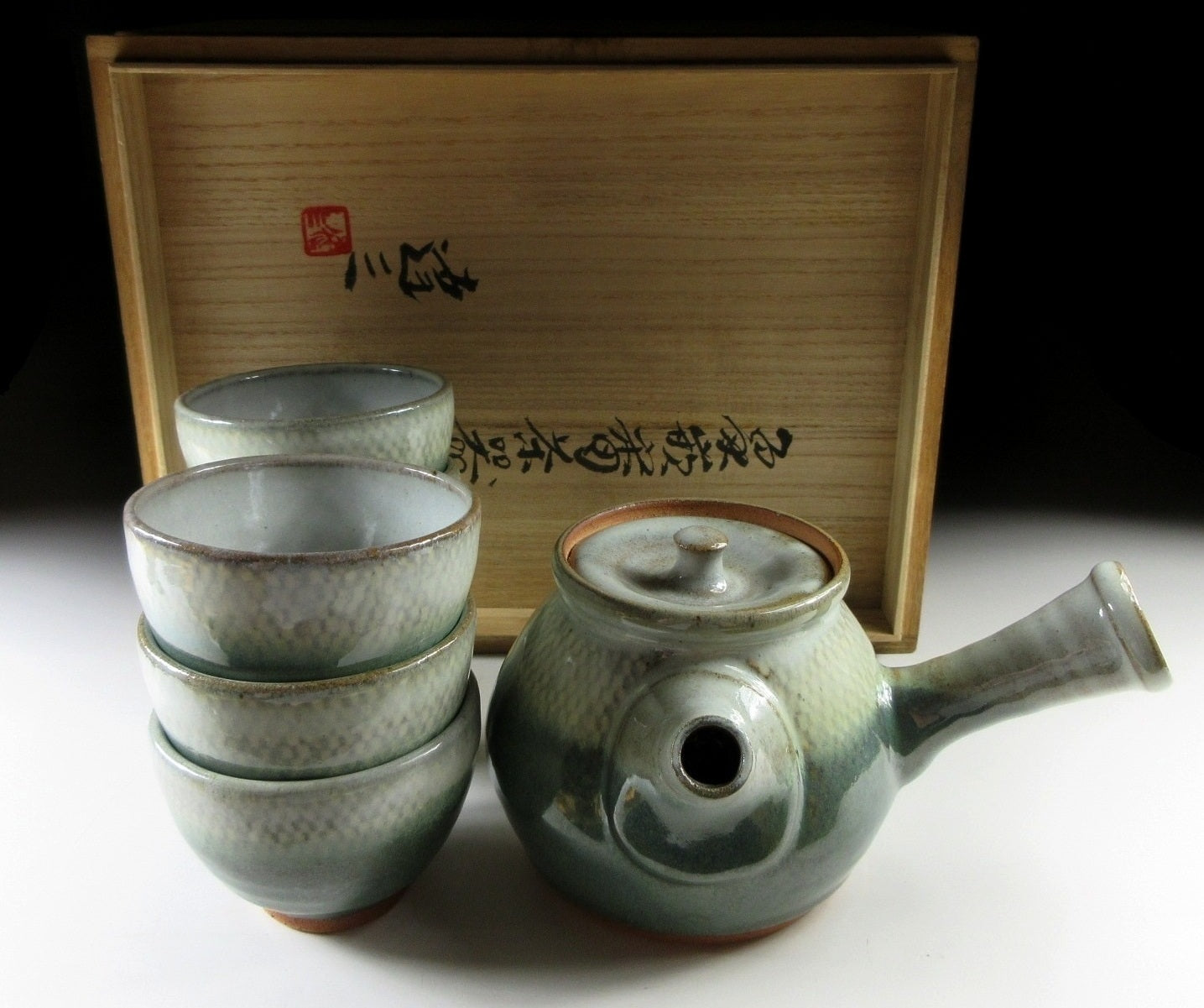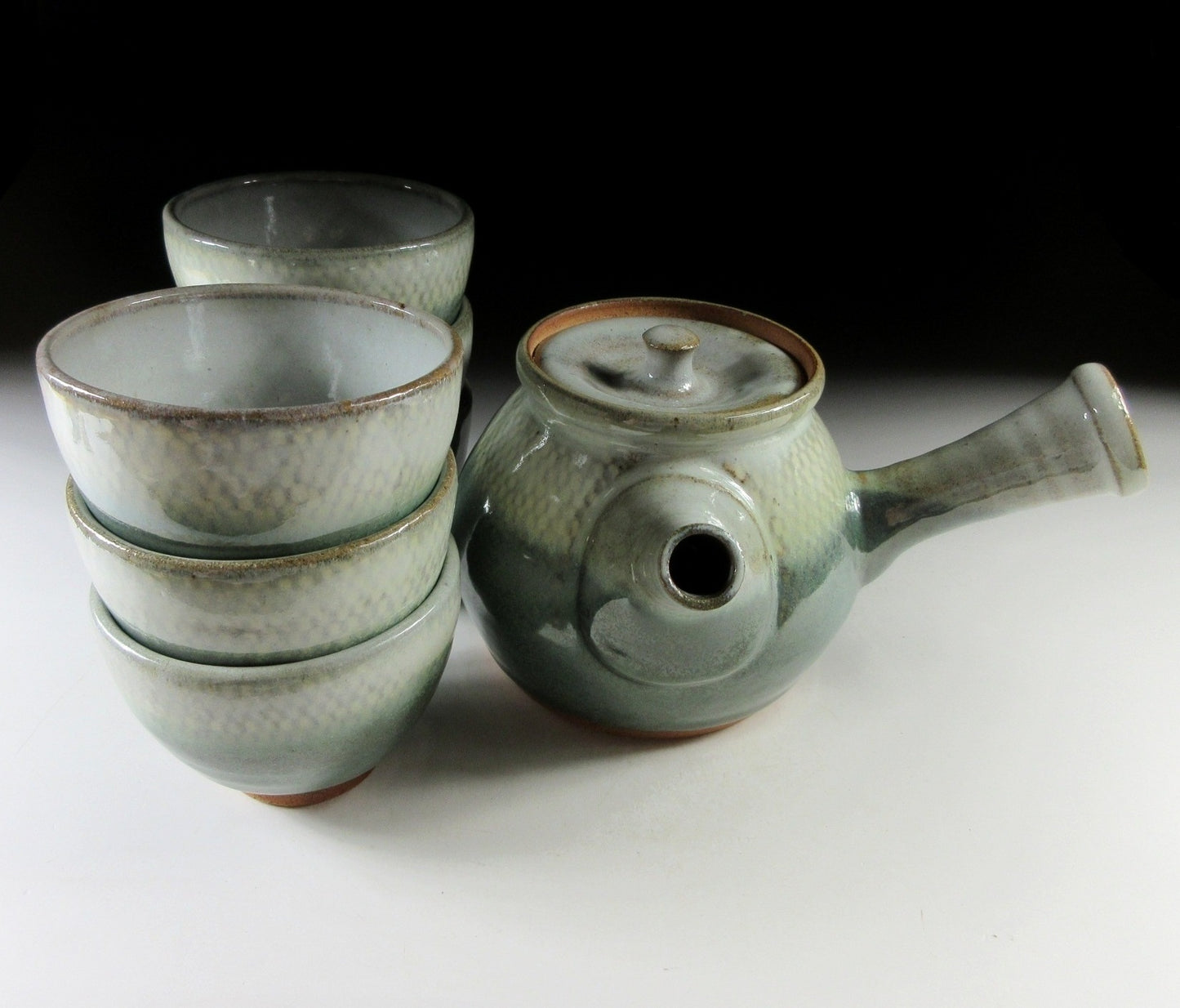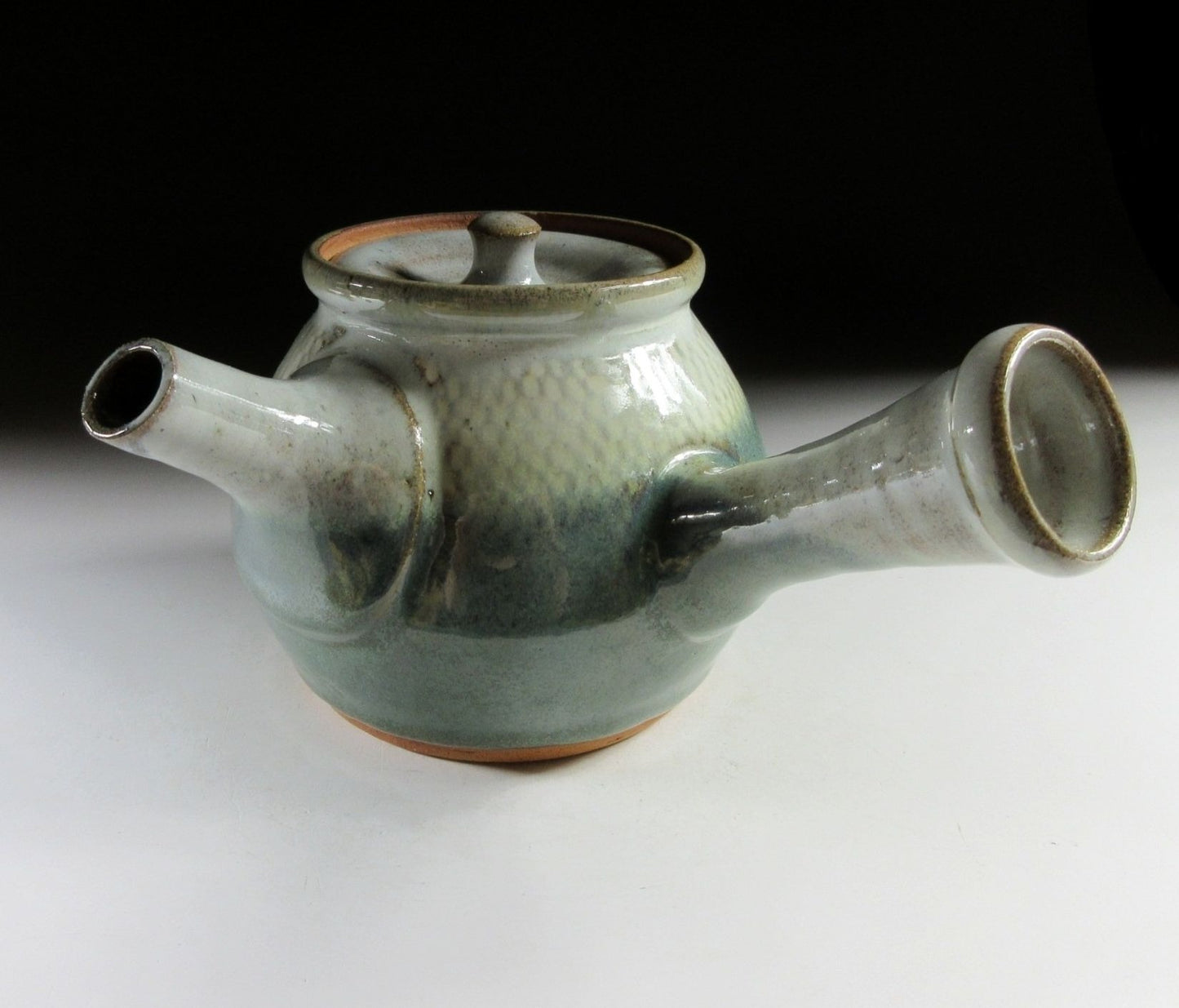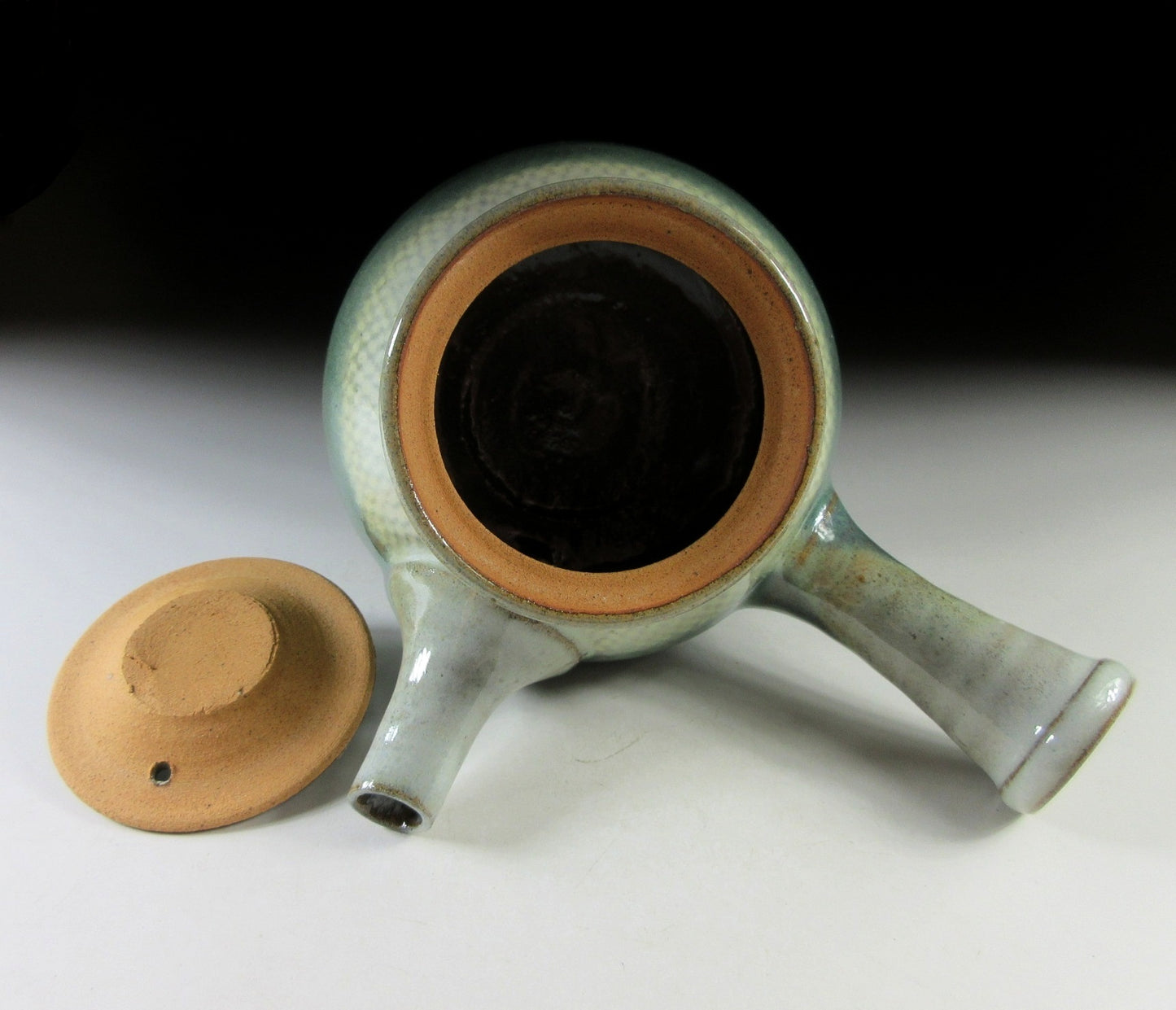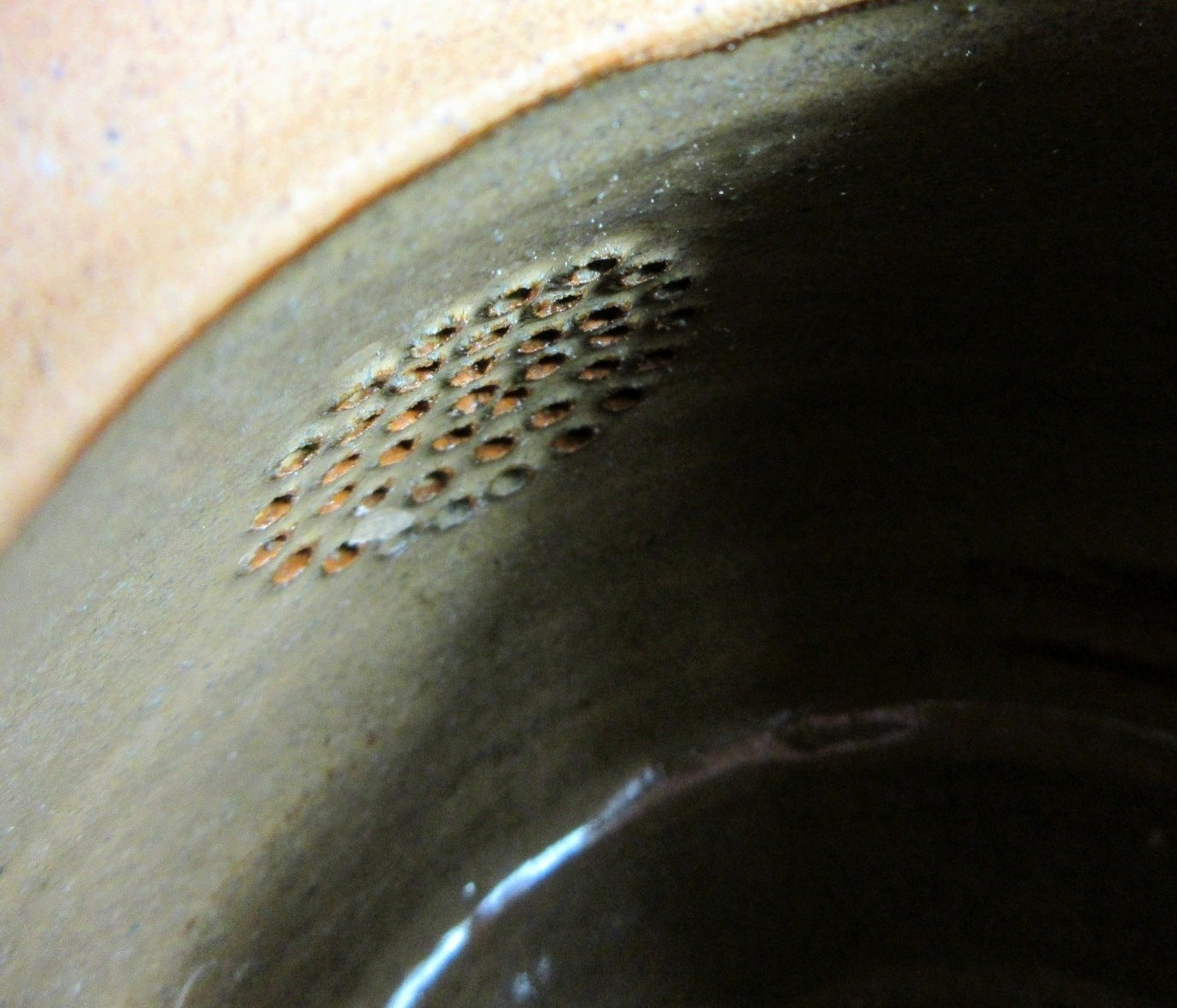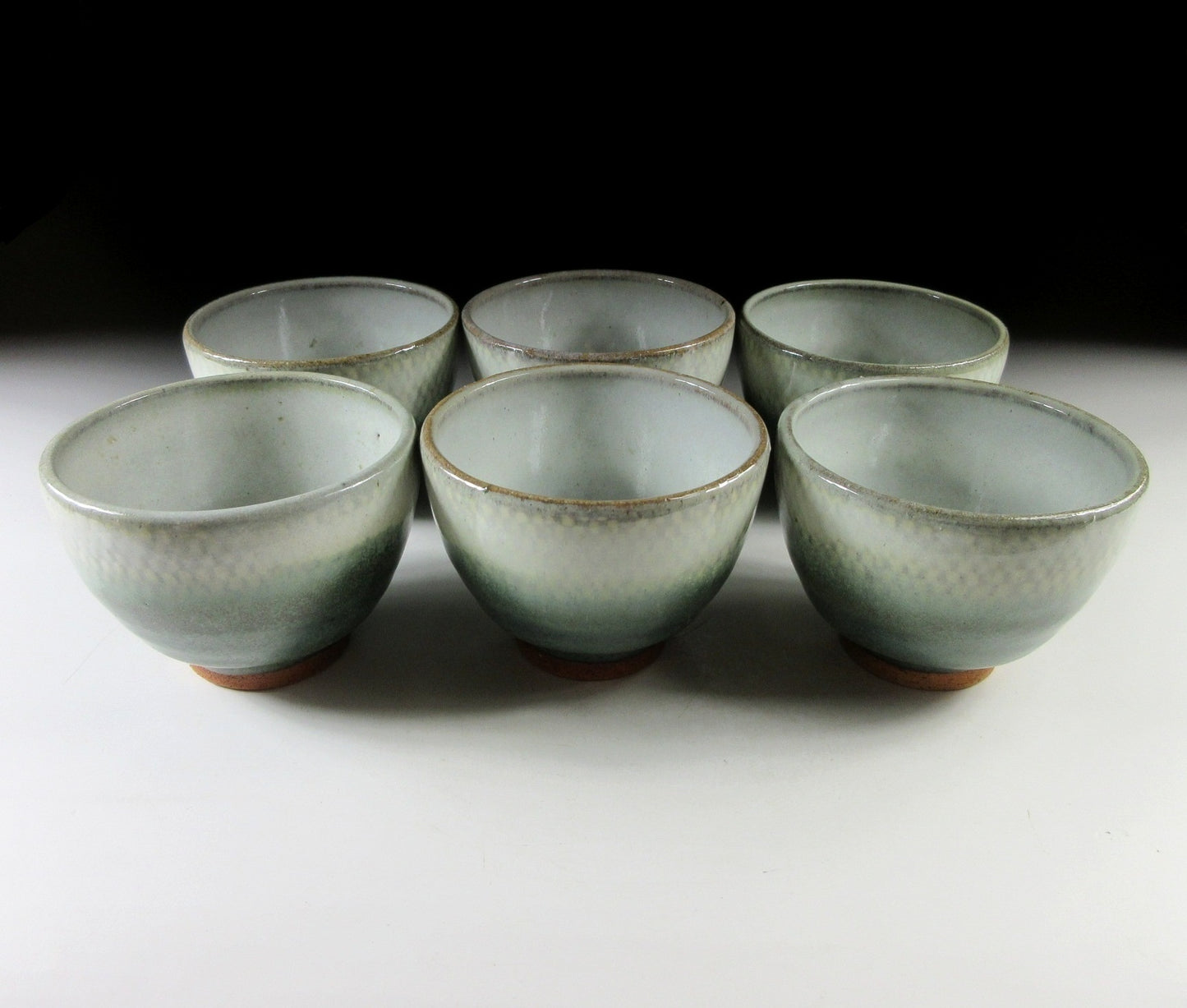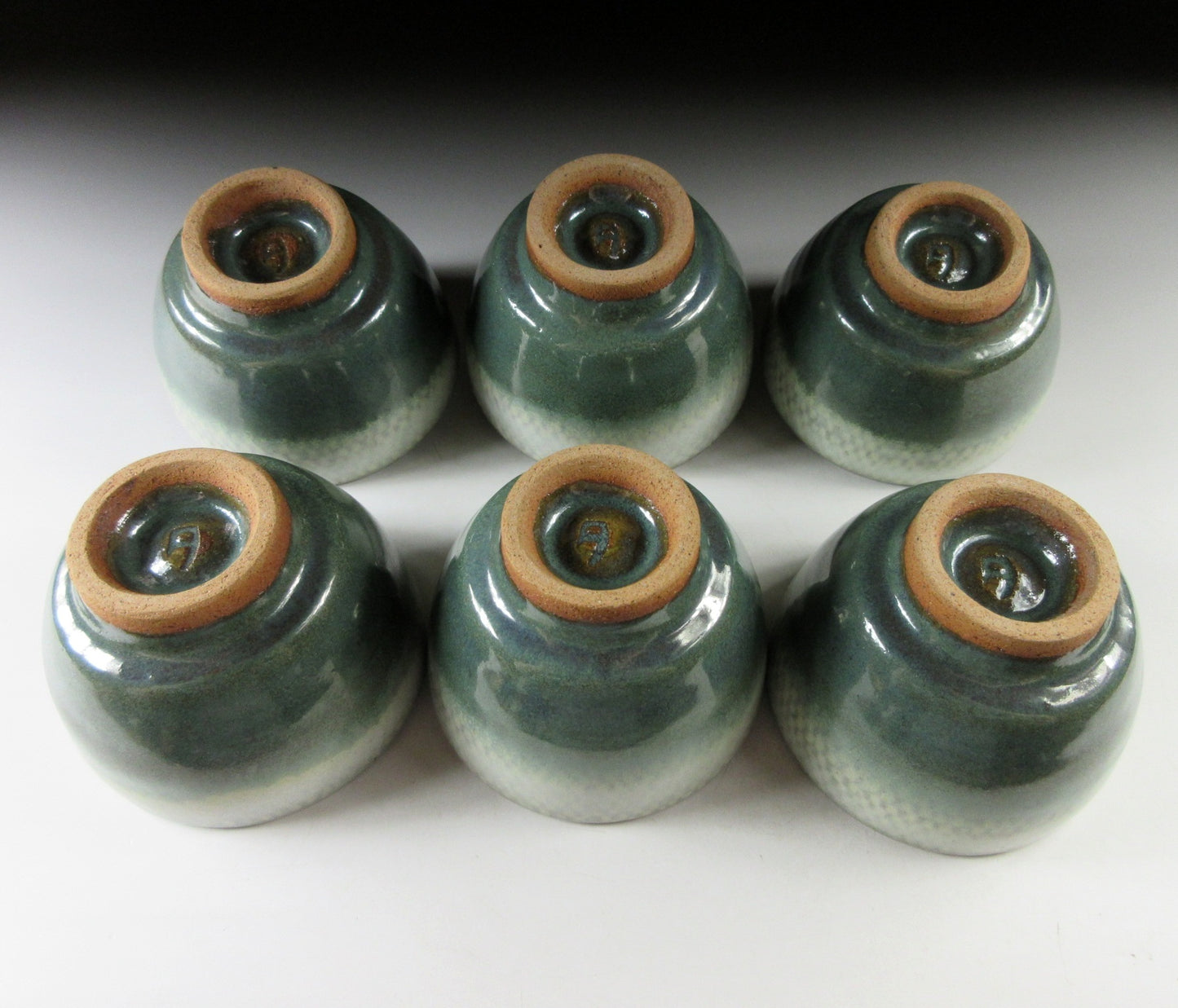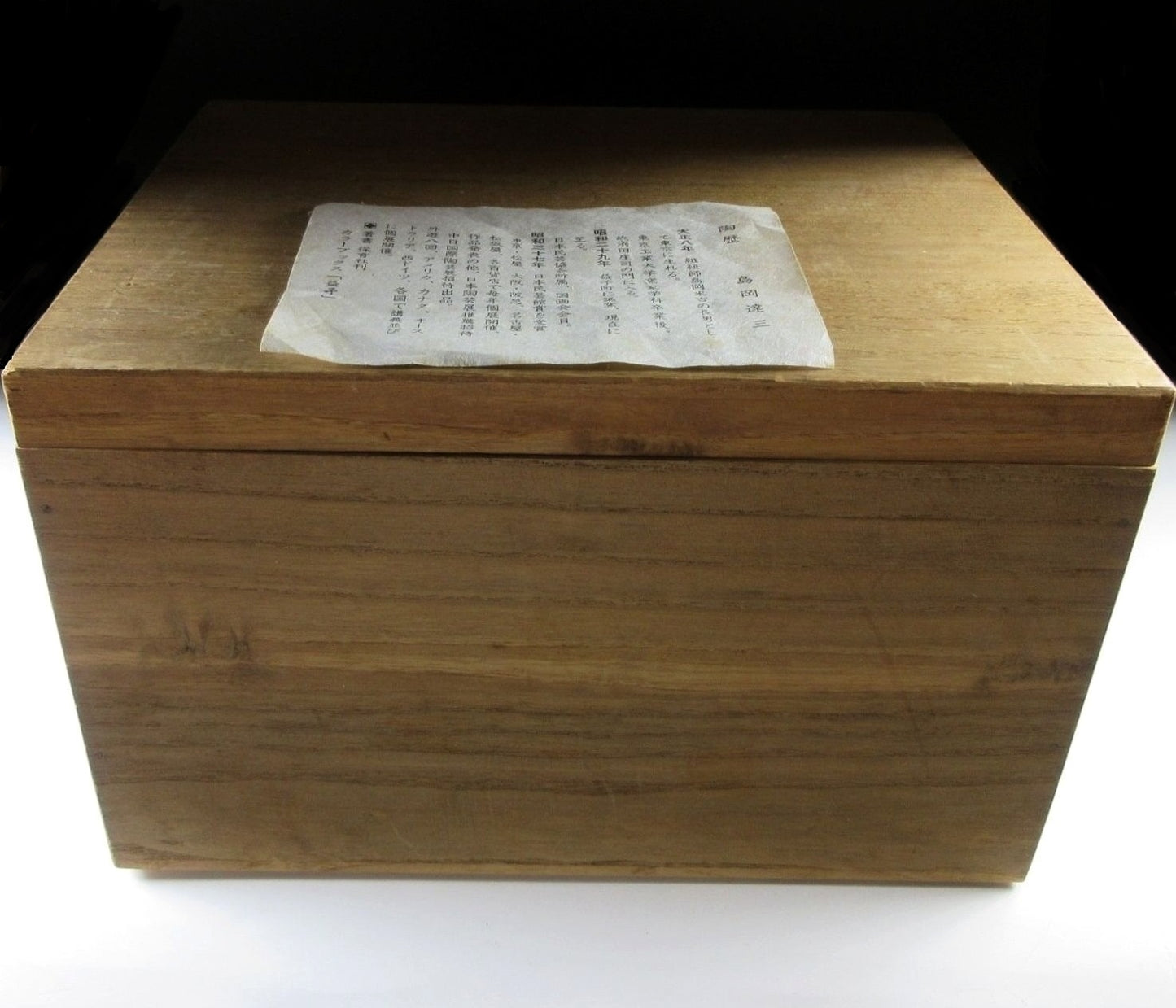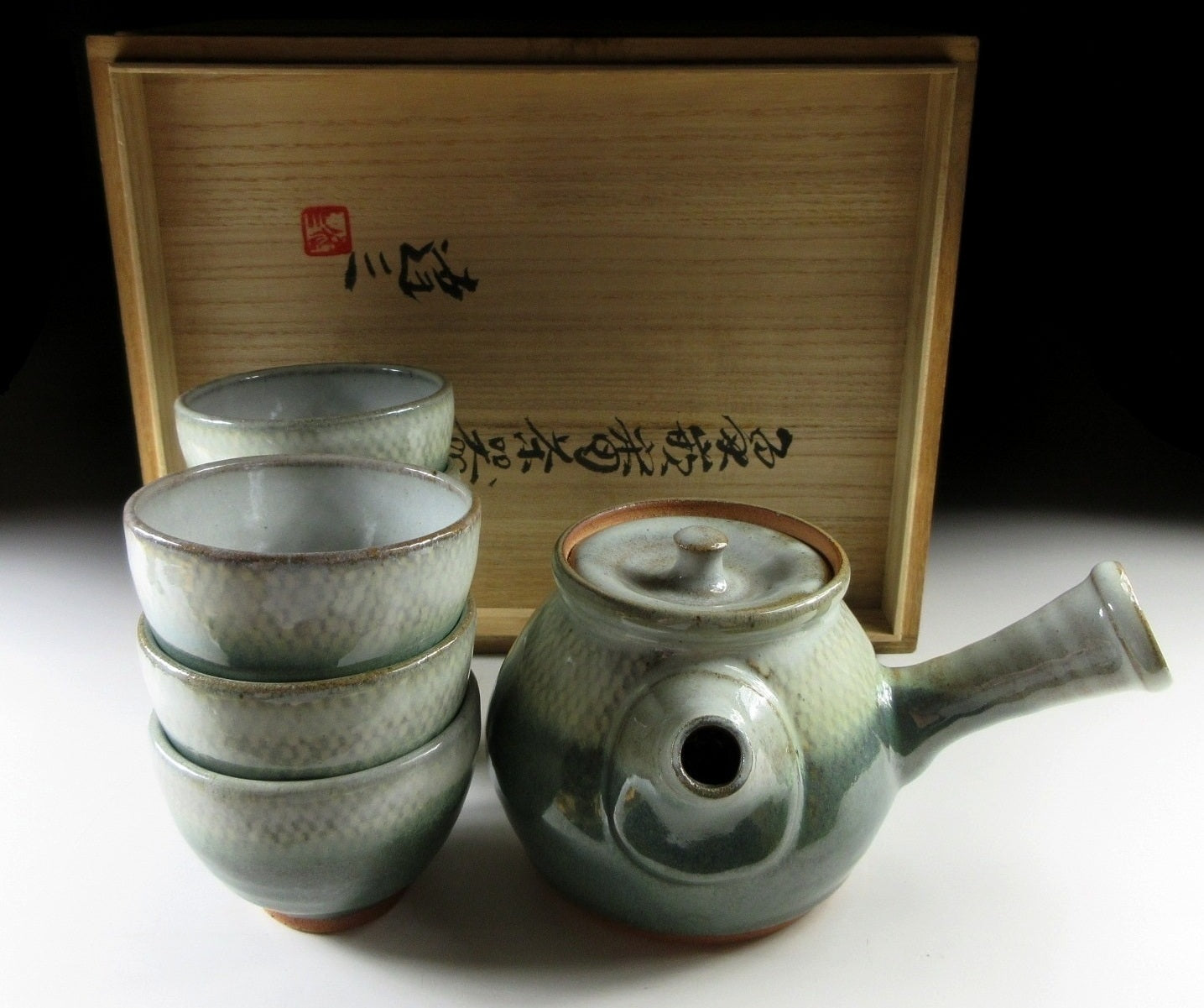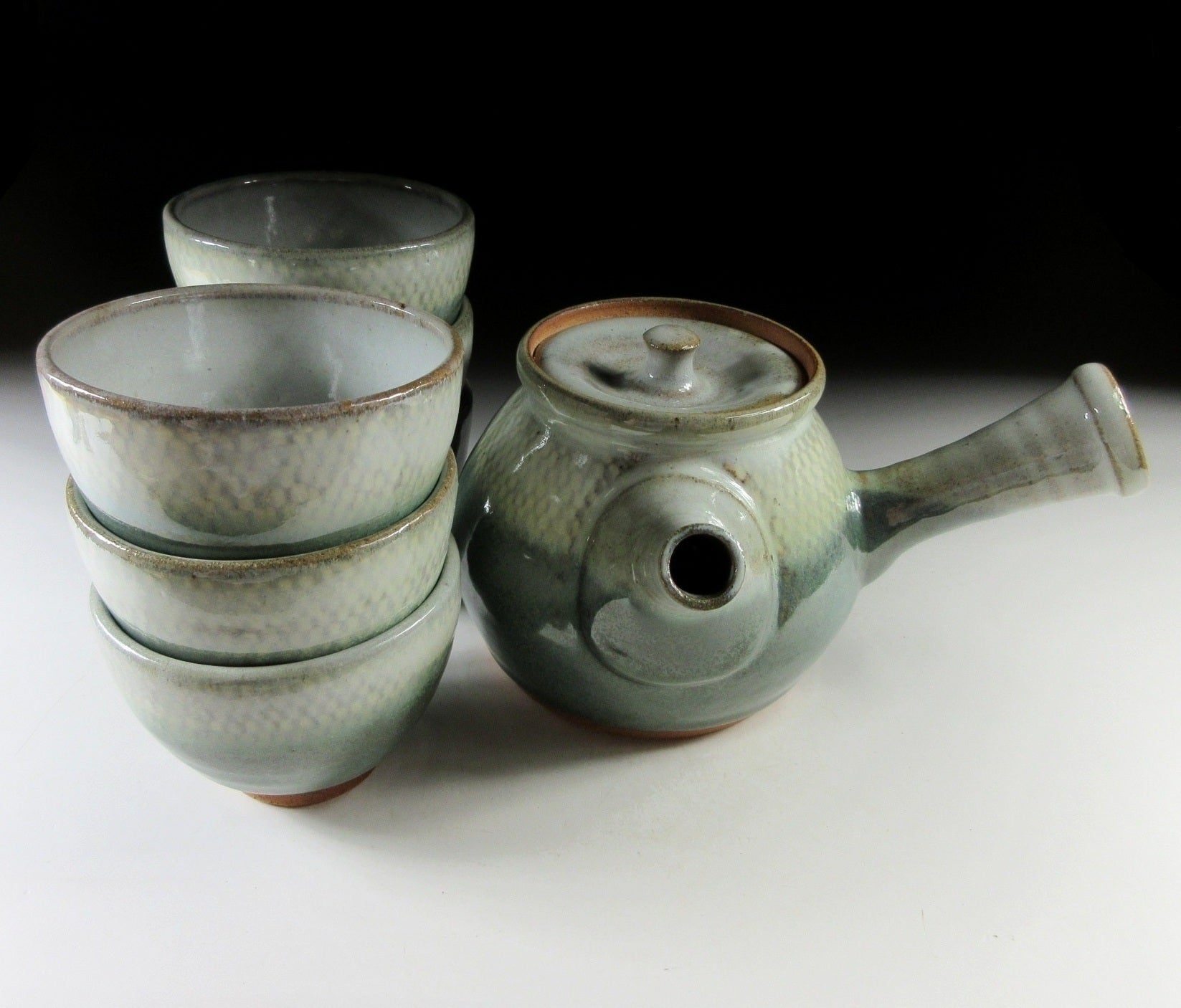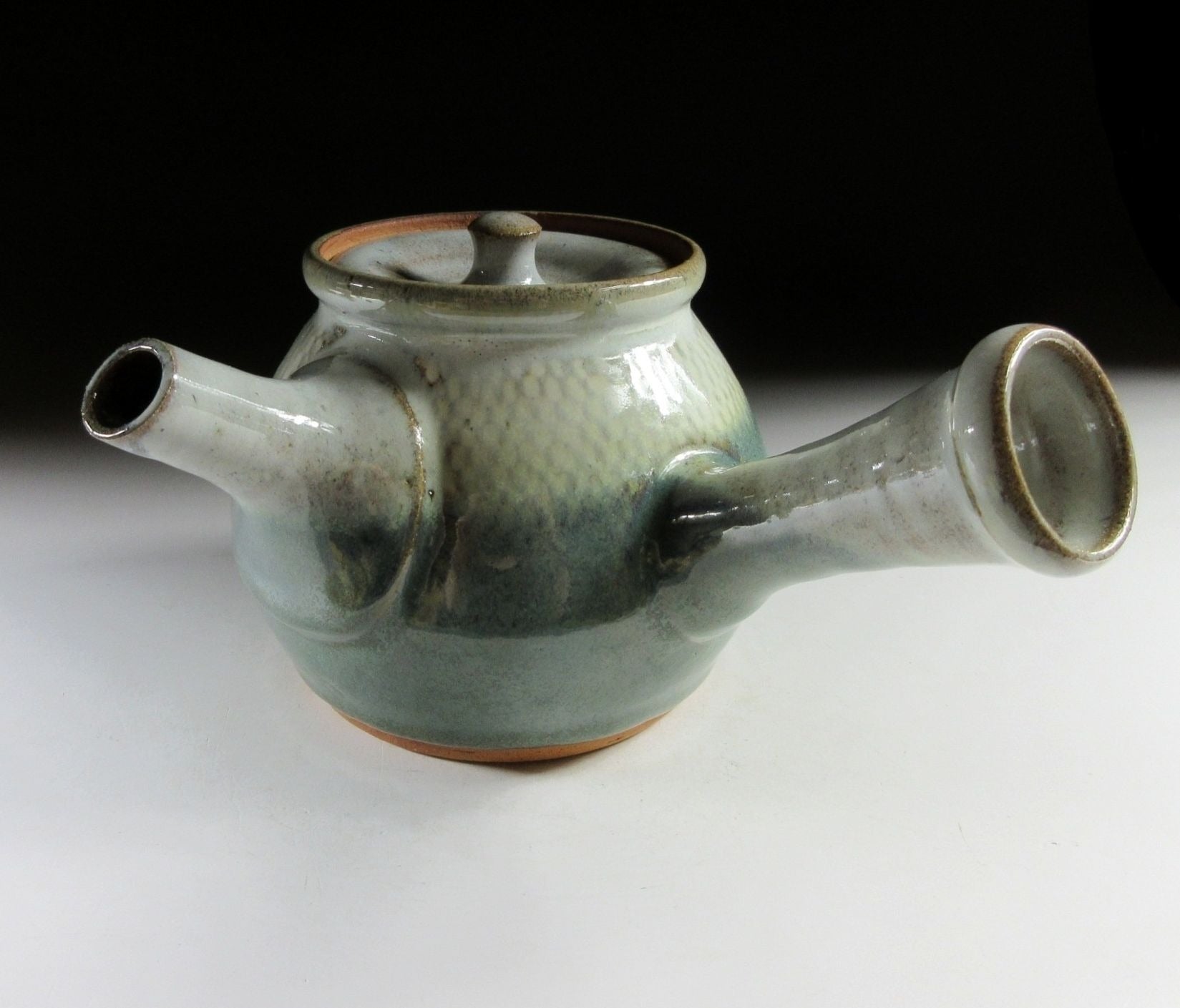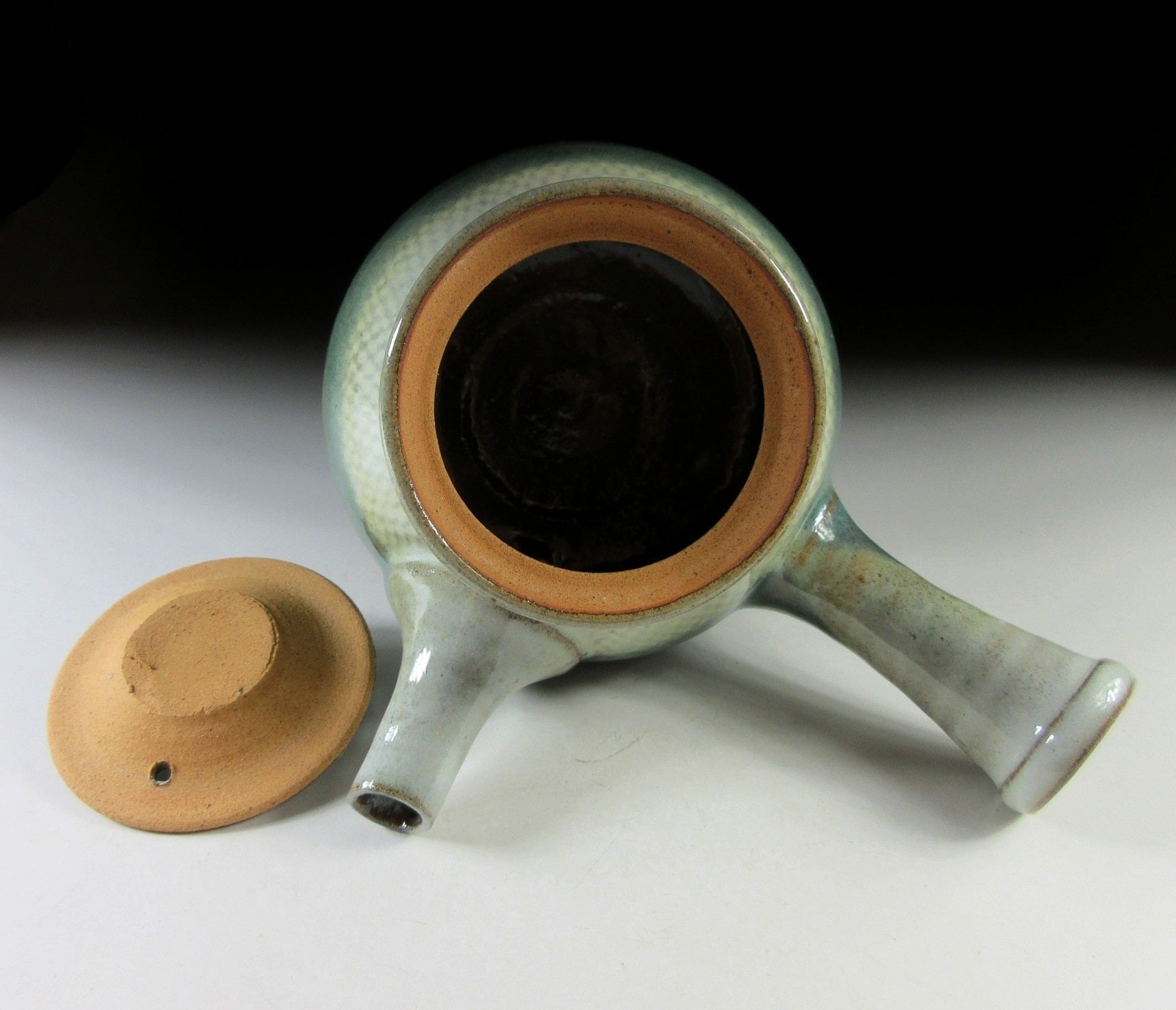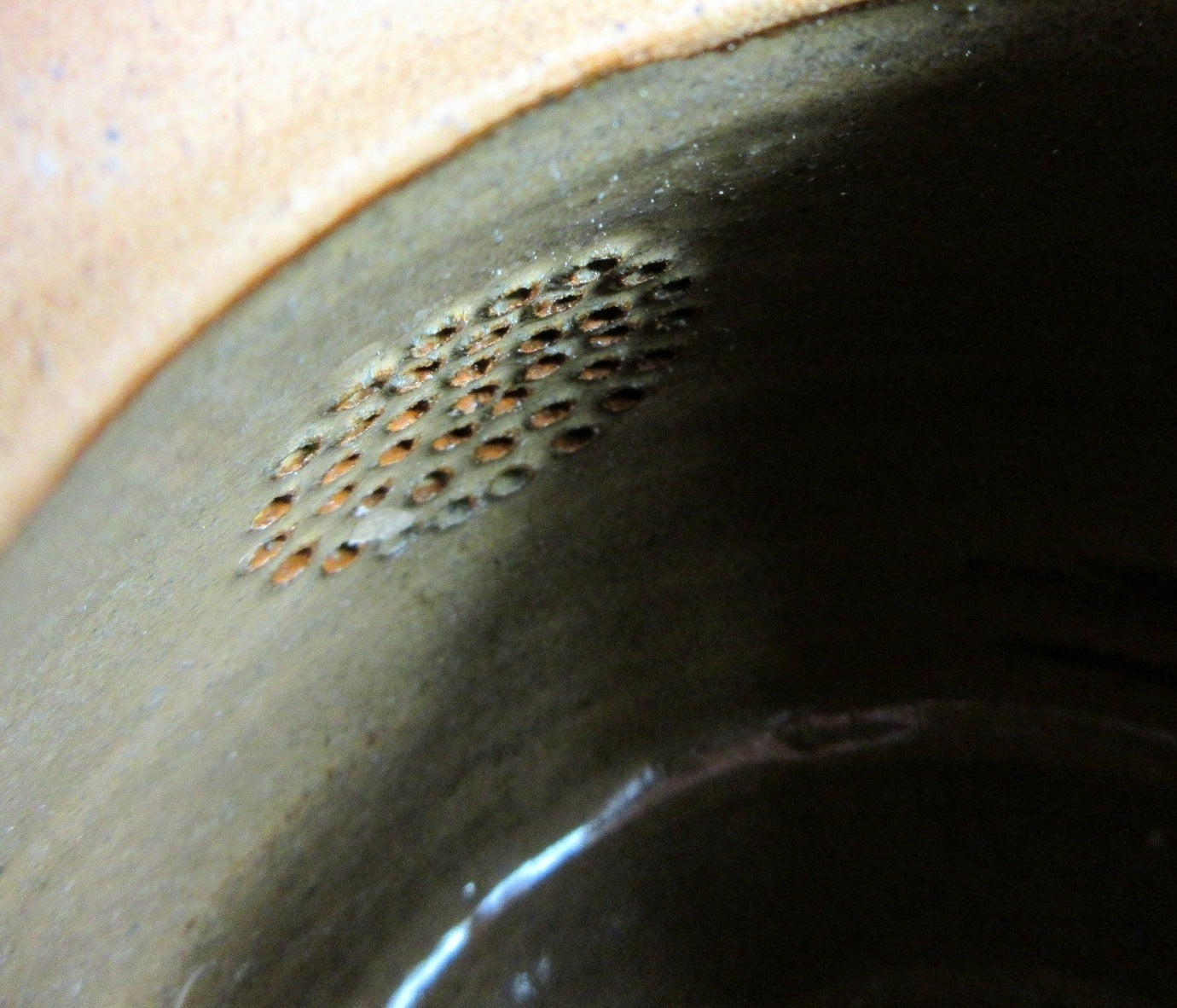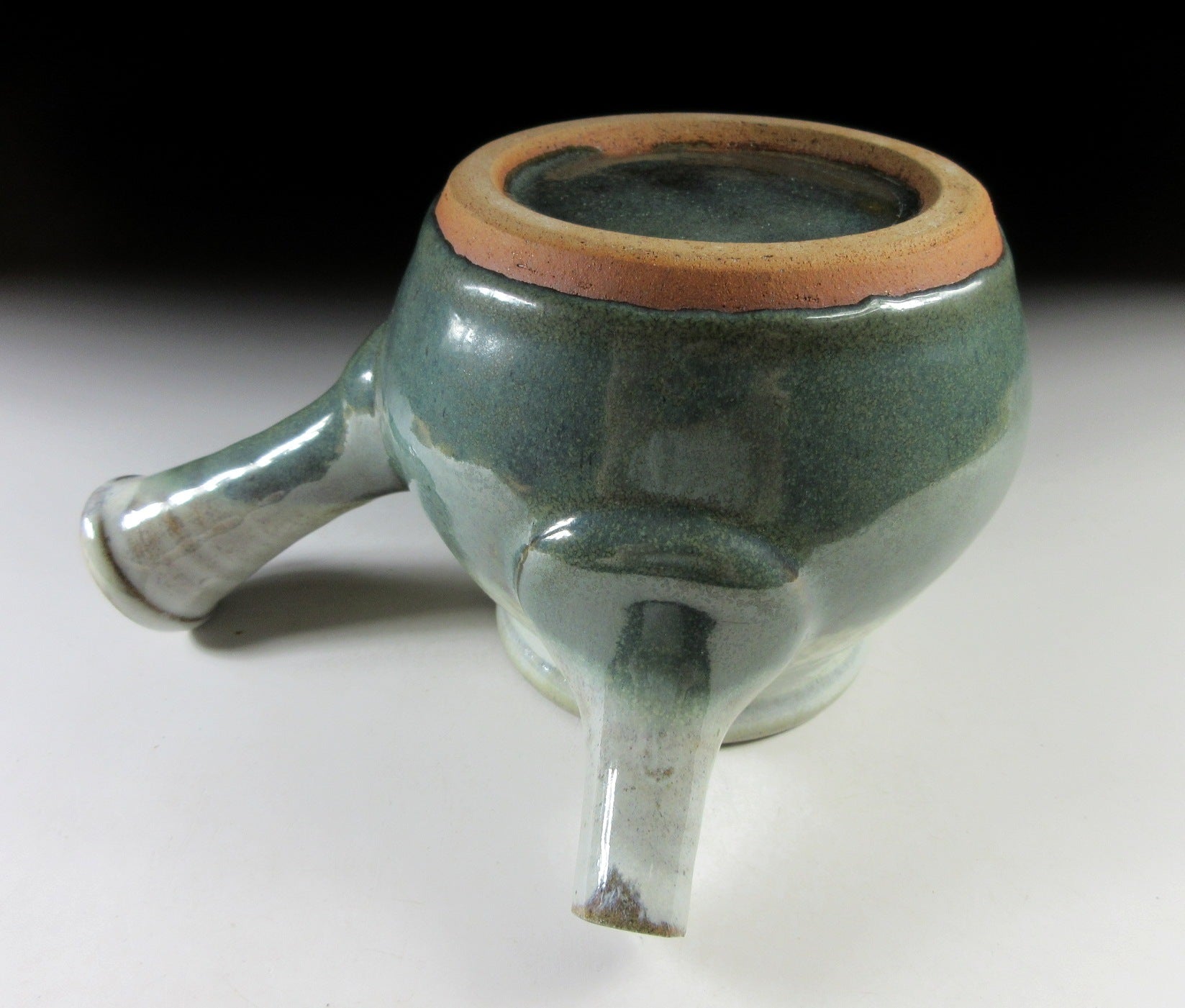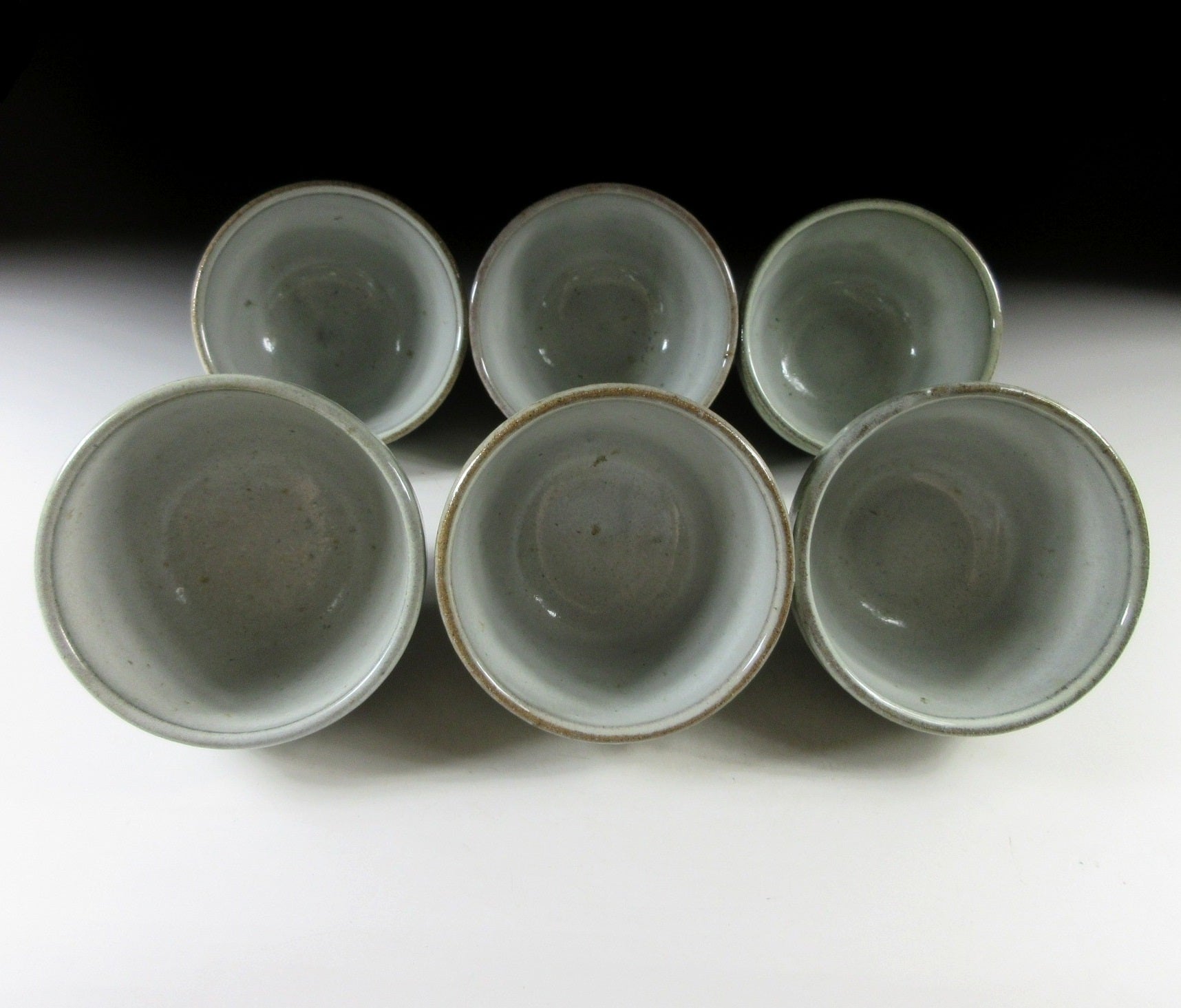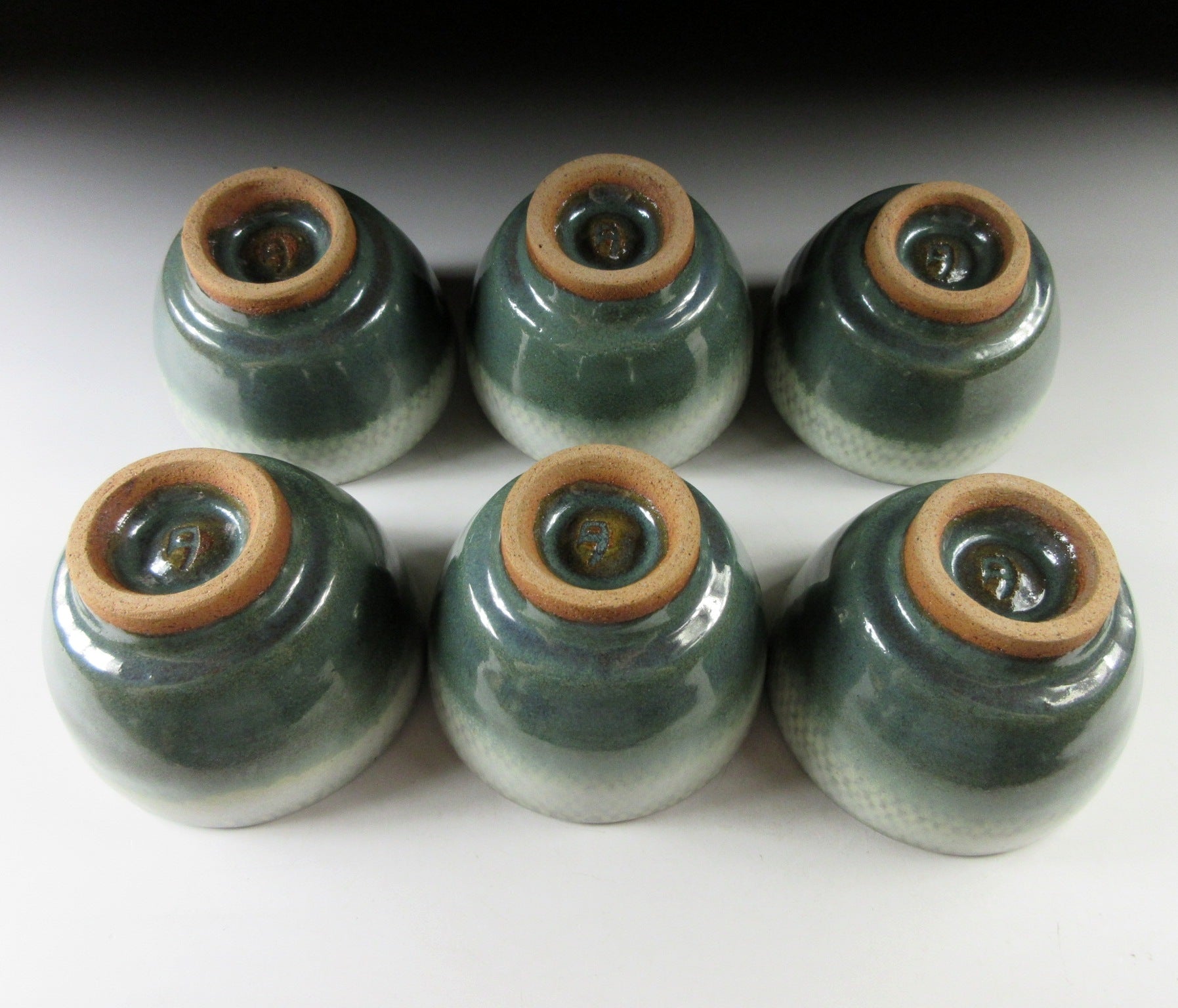Kominka Zakka
Shimaoka Tatsuzo Bancha Tea Set
Shimaoka Tatsuzo Bancha Tea Set
Couldn't load pickup availability
*THIS ITEM WILL BE SHIPPING VIA EMS EXPRESS TO ALL AVAILABLE DESTINATIONS.
This listing is for a splendid bancha tea set made around 30 years ago by Living National Treasure, Shimaoka Tatsuzo. The set consists of a kyusu style teapot and six matching cups. Each piece is wheel-thrown and decorated with Shimaoka’s signature Jomon zogan technique. Jomon zogan refers to the technique of applying white slip over rope impressions on the surface of wet clay. Both the cups and the kyusu are ample in size, the capacity of the kyusu is 600ml. The mark of the potter can be found on each piece, and the set comes with its original signed wooden storage box (the mark on the kyusu is a little hard to spot at first due to it being covered with glaze). Each piece was wrapped in newspaper dated August 3 1983, making this set at least 40 years old.
Shimaoka Tatsuzo (1919-2007) was a Mashiko-ware potter who studied under the great Hamada Shoji. In 1950 he began working at the Tochigi Prefecture Ceramic Research Centre, and it was here that he began experimenting with the rope inlay technique. This technique was primarily inspired by the rope impressions found on Jomon pottery, as well as the Korean technique of applying slip to indentations on greenware. He went on to build several kilns in the Mashiko area, and took on many pupils. Oka Gama is one such kiln. In 1996 Shimaoka was designated as a Living National Treasure, and in 1999 he was awarded the Order of the Rising Sun. **Fellow sellers, this information was researched by Kominka Zakka and CANNOT be used in your own listings.
Mashiko-ware is pottery produced in the area around Mashiko in Tochigi prefecture. It began in the mid-1800s after good quality clay was found in the local. There was a large demand for everyday cooking vessels in Tokyo so the number of workshops in Mashiko expanded and many craftsmen took up the trade. In the early 1900s Shoji Hamada took Mashiko-ware to a whole new level when he began promoting the folk art movement. Mashiko-ware is probably best known for its brown glazes along with splashes of red, black, green or white.
Sizes
Box: H.19cm (7.4”) x 30.9cm (12.1”) x 23.7cm (9.3”)
Kyusu: H.10cm (3.9”) x 17.3cm (6.8”) from side to handle
Cups: H.6.5cm (2.5”) x Dia.9.1cm (3.5”)
Condition
The entire set is in very good condition with no chips or cracks and appears completely unused.
THESE ARE SHIPPING ESTIMATES BASED ON THE CURRENT GLOBAL SITUATION
**Germany, France, Greece, Spain, Poland, Austria, Slovakia, Lithuania, Slovenia: NO SHIPPING. Very strict and expensive packaging laws in place and we are not licensed to send products to these countries. We have no plan to register at this time because the process is in some cases very expensive and complicated, plus each country has its own set of regulations and application process.
**USA, UK, Canada, Australia, New Zealand, Switzerland, Norway: EMS Express 7-10 days.
**Asia: EMS Express 3-5 days.
**Central Asia, Middle East, South Africa, Brazil, Mexico: EMS Express 10-15 days.
**Russia: No shipping methods available.
Share
